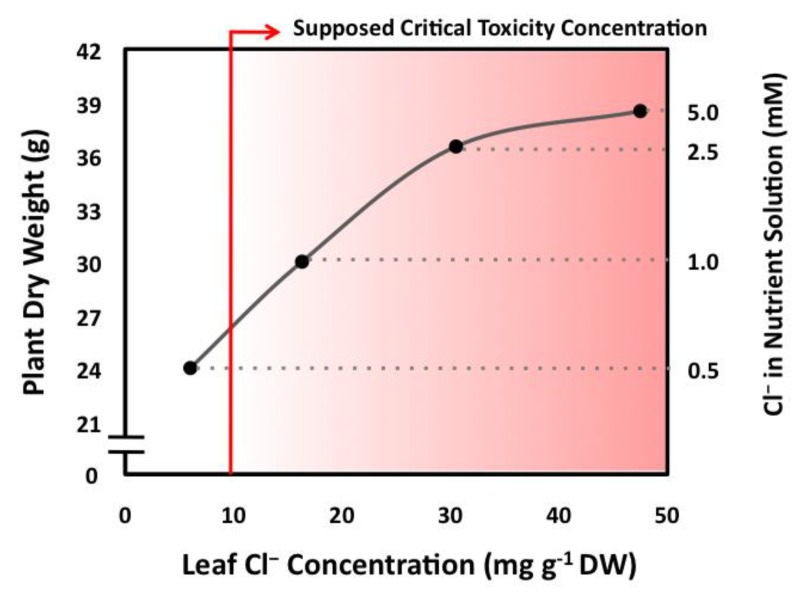Figure 2.
Stimulation of tobacco plant growth by macronutrient Cl− contents. The data, obtained from Franco-Navarro et al. [2] and from Colmenero-Flores et al (umpublished results) illustrates growth stimulation in terms of dry weight biomass in a range of leaf Cl− contents within the beneficial macronutrient range, which clearly overlaps with the previously reported toxic contents for this species [5]. There is a widespread belief that the accumulation of Cl− in plant tissues does not necessary reflect the quantity requested. Chloride applications in the 1–5 mM Cl− range determine increasing values of leaf Cl− accumulation in a linear fashion, which in turn determine positive responses in terms of dry biomass, strongly supporting that plants regulate the required amount of Cl− within the beneficial macronutrient range. Although the response remains positive with the application of 5 mM Cl−, the response curve inflection indicates that the trend can be reversed at higher Cl− concentrations. For example, in a similar assay, in comparison to the 5 mM Cl− treatment, 15 mM Cl− application resulted in lower dry weight, indicating that this concentration exceeds the beneficial range of Cl− nutrition.

